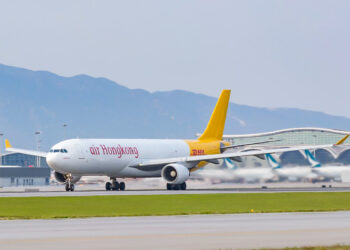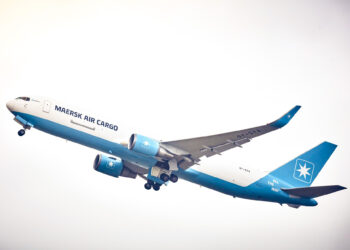No products in the cart.
IATA reports only 2.1% air freight traffic growth for July
 Despite reports from carriers, airports, ground handlers, and the Association of Asia Pacific Airlines (AAPA) indicating a rebound in air freight traffic growth rates during July, the International Air Transport Association (IATA) recorded a significant slowdown in year-over-year growth for the month, at only 2.1%.
Despite reports from carriers, airports, ground handlers, and the Association of Asia Pacific Airlines (AAPA) indicating a rebound in air freight traffic growth rates during July, the International Air Transport Association (IATA) recorded a significant slowdown in year-over-year growth for the month, at only 2.1%.
IATA attributed the slower growth to a number of factors, with the most significant among those likely the end of the global inventory restocking cycle that supported unusually strong growth through 2016 and 2017. Another notable factor relates to manufacturing firms’ export order books, which IATA noted have weakened since the beginning of 2018, particularly in Asia and Europe. Alongside weaker order books, IATA said suppliers are under less pressure to deliver goods within time frames that typically mandate air transportation over slower, less expensive modes. All of these factors are supportive of ocean and land transport over faster, more expensive air freight.
Turning to a regional analysis of July results, Middle Eastern carriers reported surprisingly strong growth in international freight tonne kilometers (FTKs) for July, at 5.4%. Considering the slower growth in other regions, reported growth by Middle Eastern airlines makes it the strongest region for the first time in more than two years. At 2.6% y-o-y growth in FTKs, Latin American carriers reported the next-strongest growth among regions. However, given the region’s steadier growth over the past year, that marks a significant slowdown in Latin America. European, North American, and Asia Pacific carriers reported y-o-y growth of 2.5%, 1.9%, and 0.5%, respectively, while African carriers reported another month of y-o-y declines, at 8.2%.
Considering the significant gap in growth reported by IATA and other industry associations and participants, the report of only 2.1% growth in July should be taken with a grain of salt. As an airline executive told Cargo Facts, IATA’s figures are unfortunately incomplete, since only IATA members report to the association, and miss out on some of the express segment, as well as most e-commerce traffic.
As representatives from airports in Europe and the United States – both reporting figures nearer 25% y-o-y growth in July – told Cargo Facts, e-commerce traffic has been a major driver of air cargo growth in the US, Europe, and to and from the Asia Pacific region. If IATA’s data is not currently capturing that traffic, air cargo is likely much stronger than its July reports indicate.
Looking ahead, IATA is surprisingly bullish on air freight, given its July results and the worries the association has expressed over escalations in tariffs. While IATA said indicators suggest annual FTK growth could continue to slow during the coming months, it also expressed optimism that strong and growing demand drivers like e-commerce could counteract the negative factors.
Learn more about the impact of e-commerce on air freight on 10-12 October at Cargo Facts Symposium, where a presentation and roundtable panel discussion will be dedicated to the topic. For more information, or to register, visit www.cargofactssymposium.com.




